Hey, let’s create a stunning open terrarium together! Start by picking a clear glass container, like a 6-inch wide bowl or a 10-inch tall vase, to showcase your mini garden. Open terrariums are glass setups without lids, allowing air circulation. I’ve got 10 easy ideas to make yours stand out; stick with me to explore the first step in selecting the perfect vessel.
Contents
- 1 Selecting the Perfect Glass Container
- 2 Choosing Low-Maintenance Plants
- 3 Layering Gravel for Drainage
- 4 Adding a Pop of Color With Decorative Stones
- 5 Incorporating Natural Elements Like Driftwood
- 6 Creating Depth With Moss Varieties
- 7 Mixing Textures for Visual Appeal
- 8 Positioning for Optimal Light
- 9 Balancing Humidity and Airflow
- 10 Personalizing With Miniature Accents
Selecting the Perfect Glass Container
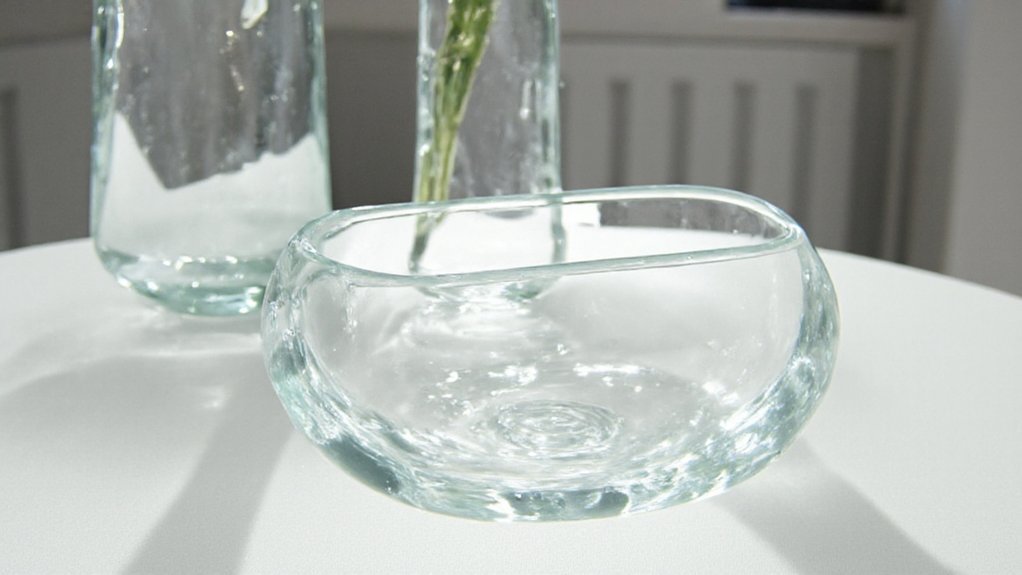
Selecting the perfect glass container is an essential step in creating a stunning open terrarium. The container not only serves as the foundation for your miniature ecosystem but also contributes greatly to its aesthetic appeal. Opt for a clear glass vessel to achieve maximum visibility of the plants and layers inside, and consider shapes like bowls, cylinders, or geometric designs to add a unique touch. The size of the container should match the scale of your vision—smaller ones work well for single plants or minimalistic designs, while larger containers can accommodate more elaborate arrangements.
Additionally, make sure the container has a wide enough opening to allow for easy planting and maintenance. Avoid containers with narrow necks, as they can make it difficult to arrange plants and substrate. Look for containers with a stable base to prevent tipping, and consider the depth to accommodate layers of drainage material, soil, and plants. A well-chosen glass container will not only support the health of your terrarium but also elevate its overall look as a decorative piece in your space.
Choosing Low-Maintenance Plants
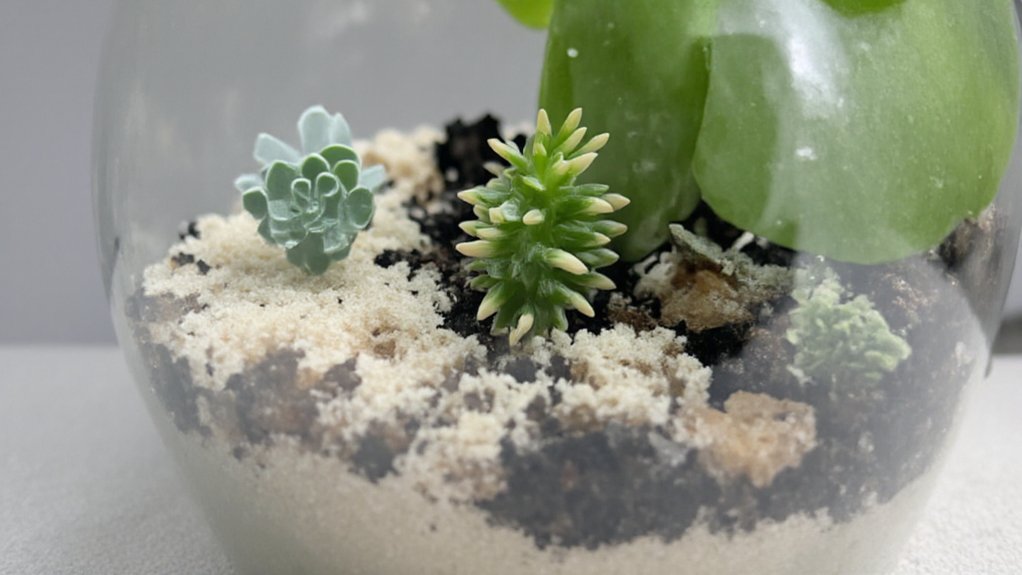
When creating an open terrarium, selecting low-maintenance plants is key to ensuring the setup thrives with minimal effort. These plants should be able to tolerate the drier conditions of an open terrarium compared to a closed one, as they are exposed to more air circulation and less humidity. Ideal choices include succulents, cacti, and air plants, which require infrequent watering and can handle periods of neglect. These plants are well-suited to the typical conditions of an open terrarium, such as bright, indirect light and well-draining soil.
Additionally, consider hardy plants like haworthia, echeveria, or small ferns that adapt well to varying light levels and don’t demand constant care. Avoid plants that need high humidity or frequent watering, as they are more likely to struggle in an open environment. By choosing low-maintenance species, you can create a beautiful, sustainable terrarium that enhances your space without becoming a chore to maintain.
Layering Gravel for Drainage
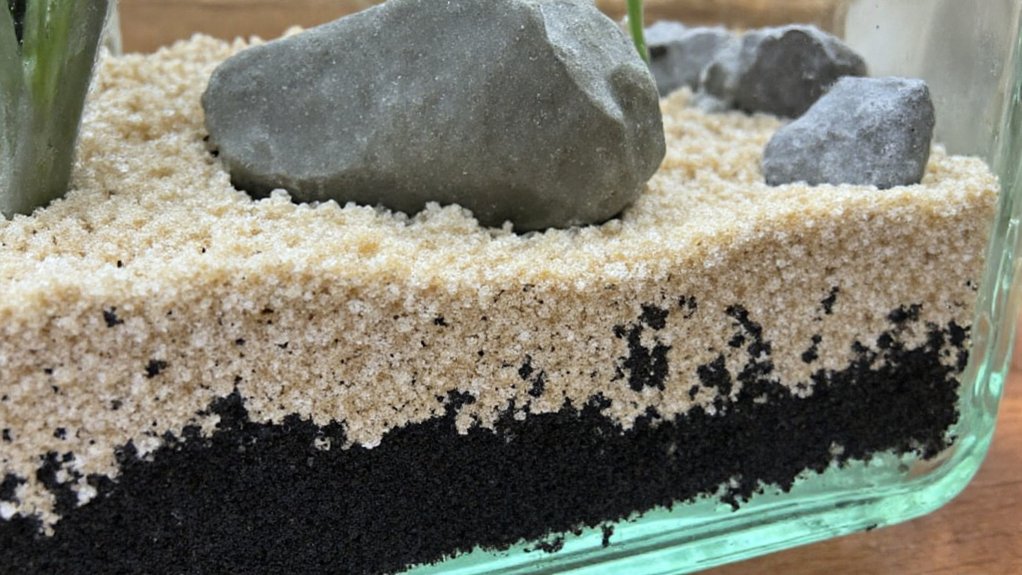
Layering gravel for drainage is a vital step in creating a healthy open terrarium. Gravel, small pebbles, or even activated charcoal can be used as the bottom layer to prevent water from pooling at the base of the container. This drainage layer allows excess water to settle away from the plant roots, reducing the risk of root rot and maintaining a balanced moisture level in the terrarium.
To implement this, start by adding a 1-2 inch layer of gravel or pebbles to the bottom of your terrarium container. If desired, you can mix in or top the gravel with a thin layer of activated charcoal to help filter the water and prevent odors. This foundational layer sets the stage for a thriving terrarium by ensuring proper drainage and protecting the health of your plants.
Adding a Pop of Color With Decorative Stones

Decorative stones are an excellent way to add a vibrant pop of color to your open terrarium, enhancing its visual appeal. Available in a variety of hues, from bold reds and blues to soft pastels and natural earth tones, these stones can be strategically placed to create contrast or complement the greenery and other elements within the terrarium. They not only serve as a decorative accent but also help with drainage and soil retention, making them both functional and stylish.
To incorporate decorative stones, consider layering them at the bottom of the terrarium for a striking base or scattering them on the surface for subtle highlights. You can mix different colors and sizes to create patterns or define specific areas, such as a pathway or a focal point around a particular plant. This simple addition can transform the overall look of your terrarium, making it an enchanting centerpiece in any space.
Incorporating Natural Elements Like Driftwood

Incorporating natural elements like driftwood into an open terrarium can add a striking, organic aesthetic while enhancing the overall design. Driftwood, with its weathered texture and unique shapes, serves as a focal point that mimics natural landscapes, such as riverbanks or forest floors. It can be used as a base for mounting air plants, orchids, or moss, creating a dynamic, multi-dimensional look that brings depth to the terrarium.
When selecting driftwood, make sure it is clean and free of pests or harmful substances by soaking or boiling it before use. Position the driftwood strategically to create a natural flow within the terrarium, allowing it to complement other elements like rocks, sand, or small plants. This addition not only elevates the visual appeal but also provides a sustainable, natural structure for plants to thrive in an open environment.
Creating Depth With Moss Varieties

Creating depth with moss varieties is an excellent way to add visual interest and texture to an open terrarium. Moss comes in various types, such as sheet moss, cushion moss, and haircap moss, each with unique shapes and growth patterns. By layering or clustering different mosses at varying heights, you can mimic a natural landscape, making the terrarium appear more dynamic and multidimensional.
For instance, placing low-growing sheet moss as a base layer can represent a forest floor, while taller cushion moss can act as small hills or mounds. Adding haircap moss, with its upright, spiky structure, can simulate miniature trees or shrubs, enhancing the illusion of depth. This strategic use of moss varieties not only elevates the aesthetic appeal but also creates a sense of realism in your terrarium design.
Mixing Textures for Visual Appeal
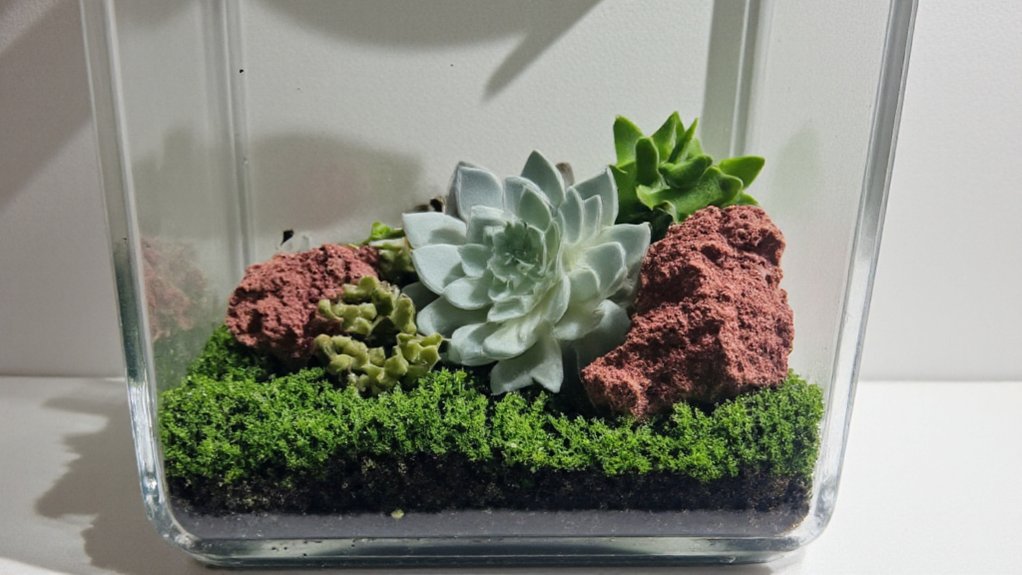
Mixing textures in an open terrarium is a fantastic way to create visual appeal and add depth to your miniature landscape. By combining plants with varying leaf shapes, sizes, and surfaces—such as smooth, glossy ferns with rough, textured succulents—you can craft a dynamic and engaging display that draws the eye. Incorporating non-plant elements like smooth river rocks, coarse gravel, or even pieces of driftwood further enhances the contrast, making each layer of the terrarium stand out.
Additionally, consider the arrangement of these textures to guide the viewer’s gaze through the terrarium. Place finer textures, like delicate moss, in the foreground or as a base layer, while positioning bolder, coarser elements, such as spiky cacti or jagged stones, as focal points. This thoughtful interplay of textures not only mimics the diversity found in natural environments but also transforms your open terrarium into a fascinating piece of living art.
Positioning for Optimal Light
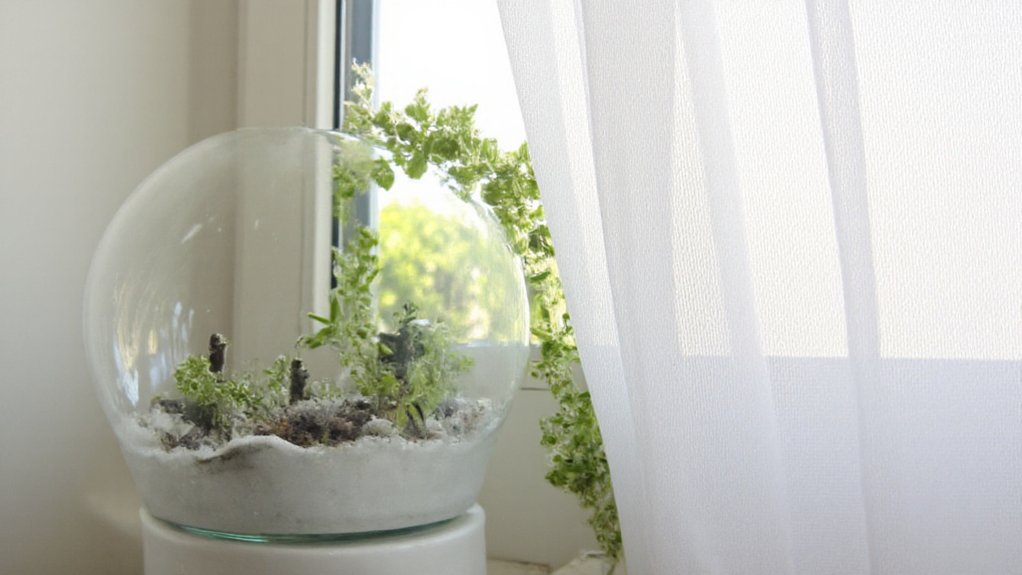
Positioning your open terrarium for ideal light is essential for the health and growth of the plants inside. Most terrarium plants, such as succulents, air plants, and small ferns, thrive in bright, indirect light. Place your terrarium near a window with filtered sunlight, such as one with a sheer curtain, to avoid harsh direct rays that can scorch the plants or cause excessive heat buildup inside the glass container.
If natural light is limited, consider using artificial grow lights designed for plants, positioning them about 6-12 inches above the terrarium for 12-16 hours a day. Rotate the terrarium occasionally to make sure all sides receive equal light exposure, preventing uneven growth. Monitoring the light conditions and adjusting the position as needed will help maintain a thriving mini ecosystem.
Balancing Humidity and Airflow
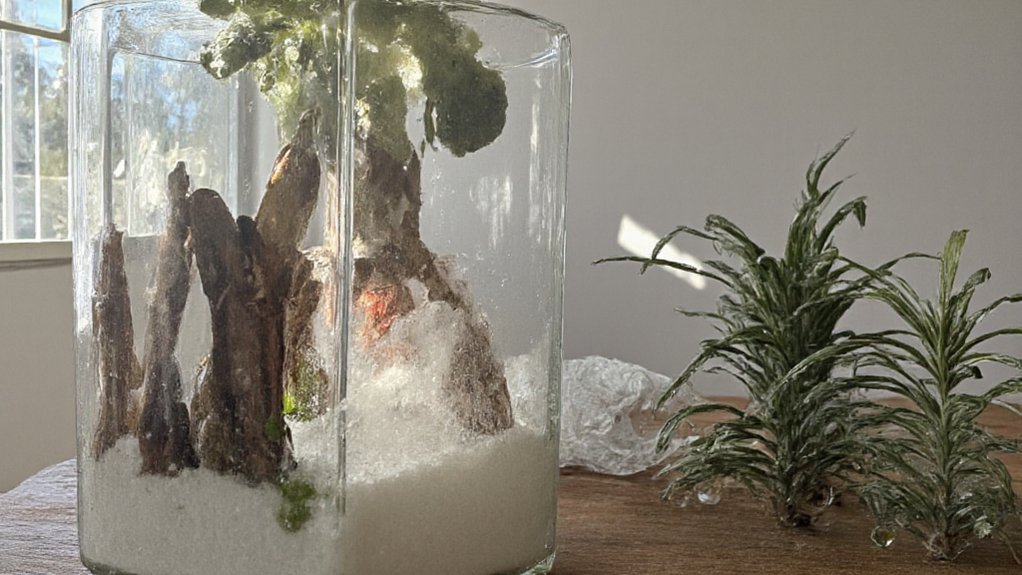
Balancing humidity and airflow is essential for maintaining a healthy open terrarium. Since open terrariums lack a lid, they are more exposed to the surrounding environment, which can lead to faster evaporation of moisture. To manage humidity, choose plants that thrive in moderate to low humidity levels, such as succulents or air plants, and avoid overwatering. Placing the terrarium in a location with indirect sunlight and away from heating or cooling vents can also help stabilize moisture levels.
Airflow is equally important, as open terrariums rely on natural air circulation to prevent mold and stagnation. Make sure the terrarium is not placed in a completely enclosed or overly humid space, as this can trap moisture and promote fungal growth. If you notice condensation or excessive dampness, gently tilt or reposition the container to encourage air movement, and consider trimming back any overgrown plants to improve ventilation.
Personalizing With Miniature Accents
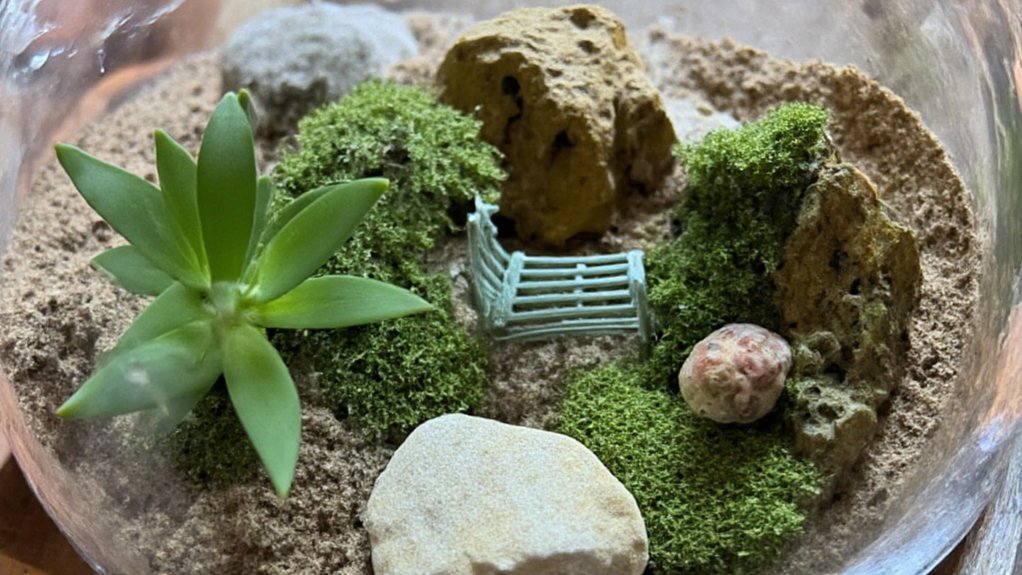
Personalizing an open terrarium with miniature accents is a delightful way to add character and charm to your miniature ecosystem. These small decorative elements, such as tiny figurines, faux rocks, driftwood, or even miniature furniture, can transform a simple terrarium into a whimsical scene or a personalized story. Choose accents that reflect your interests or hobbies, like a tiny fairy for a magical touch, a small dinosaur for a prehistoric vibe, or a miniature bench to create a serene park-like setting.
When selecting accents, make sure they are proportionate to the size of your terrarium and made of materials that won’t degrade in a humid environment. Place these items strategically to create focal points without overcrowding the space, allowing the plants to remain the centerpiece. This customization not only enhances the visual appeal but also makes your terrarium a unique reflection of your personality.
